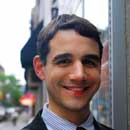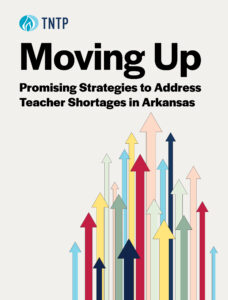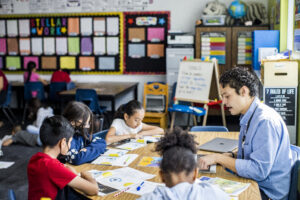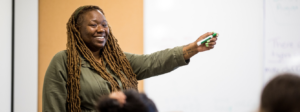What’s the best way to teach teaching? This is the important and timely question at the core of veteran reporter Elizabeth Green’s new book, Building a Better Teacher. The book traces the failure of traditional education schools to give teachers the skills they need to do their jobs well, and chronicles efforts on all sides of the “reform” spectrum to do better.
The notion that teacher preparation ought to focus on imparting useful instructional skills and techniques might sound like common sense, but as Green explains, it has never been a big part of the education school experience. Not surprisingly, this approach has created a situation where huge numbers of first-year teachers simply aren’t ready to serve their students effectively. It’s a problem that gained national attention last year when the National Council on Teacher Quality published its inaugural Teacher Prep Review. (It’s also one we’re trying to address in our own preparation programs.)
Green’s biggest contribution to this debate is illustrating exactly why we should view teaching as a set of skills to be learned, instead of a mystical art that people have to figure out on their own. From the book’s very first page, Green takes us inside the minds of teachers at work and reveals that teaching is one of the most complex and cognitively demanding jobs on the planet. Teachers face a barrage of snap judgments every minute of every class: How should I deal with a student who’s not following directions? How should I respond to a wrong answer? Which students are not engaged with the lesson—and how can I get them back on track? All of this, of course, while trying to steer a lesson in the direction it actually needs to go.
For anyone who’s never taught, it’s likely to be a revelation. It’s also the best argument yet for why teaching deserves to be in the pantheon of the country’s most elite professions, one that the nation’s most talented college graduates aspire to be part of in a way they generally don’t today.
But here’s where Green’s book goes a bit off the rails. In setting out to bust the “myth of the natural-born teacher” and show that teaching can be learned, she advances an even more dangerous myth: the notion that anybody can be good teacher given enough of the right training.
The basic problem is that she offers readers only two choices for how great teachers come to be: either they’re “born” or they’re “made.” She comes down firmly in the “made” camp, and she’s certainly right to a degree. But she never really considers the limits of that explanation, or the much more plausible idea that natural talent and learned skill both play an important role in a teacher’s success.
For example, think about what it takes to become a successful surgeon. You certainly can’t intuit your way to the operating room. You need the right kind of training—years studying biology and medicine and practicing specific procedures. But none of this studying and practice will do you any good without uncommonly good dexterity, an ability to thrive under pressure, or a host of other natural abilities. Surgeons are not born or made; they are born and made. The same is true of most other professions.
Isn’t teaching in the same category? It flies in the face of common sense to suggest that anybody—or even most people—could master the intricate and demanding skills Green highlights as essential to good teaching. Indeed, we’ve seen time and again in our own research that teachers who struggle to master basic instructional skills almost never become effective, no matter how much time or help they’re given.
Of course, the myth that anybody can be a good teacher long predates Green’s book. You see it in policies that let teachers earn certification without any regard to their teaching ability, that rate nearly all teachers “good” or “great,” and that give endless second chances to low-performing teachers regardless of whether they improve. When teachers struggle, it’s usually seen as a school’s obligation to make sure they improve, not to find someone better. A steadfast refusal to tell anyone that they’re not cut out for the job is arguably the defining feature of the profession. This willingness to tolerate mediocrity—or worse—has done more than anything else to diminish the status of teaching in America.
Green is certainly right to chide some in the education reform movement for viewing accountability as a magic bullet. Simply retaining the very best teachers and firing the lowest performers—while largely ignoring the majority of teachers in the middle—won’t solve the teacher quality problem on its own. But in dismissing accountability as one more misguided product of the natural-born teacher myth, Green misses its more nuanced and essential role: deciding who really has the potential to be “made” into a good teacher.
At what point should schools decide that a struggling teacher—even one with the best of intentions—is so unlikely to improve that they’d be better off just finding a replacement? How should they decide which teachers are most likely to benefit from intensive professional development? How can they ensure that they award tenure only to teachers likely to be successful over the long run? The idea that “anybody can be a good teacher” stands in the way of even asking all these questions, much less answering them.
Green ends her book by recounting her own first (and last) day of teaching, as a guest teacher in someone else’s classroom. She came away from the experience convinced that “a person absolutely can learn to teach.” It’s a sentiment that neatly sums up the best and the worst of her book. People can learn to teach, and we need to do a better job teaching them. But not everybody can make the grade. Acknowledging that truth and acting on it—even when it’s difficult—is an attitude adjustment every bit as important as the one Green argues for in the realm of teacher preparation. It’s going to take better training and real accountability to give students the great teachers they deserve.








